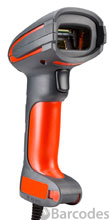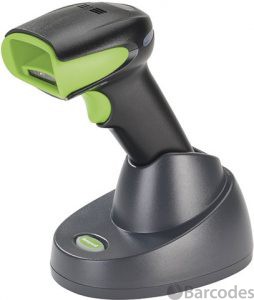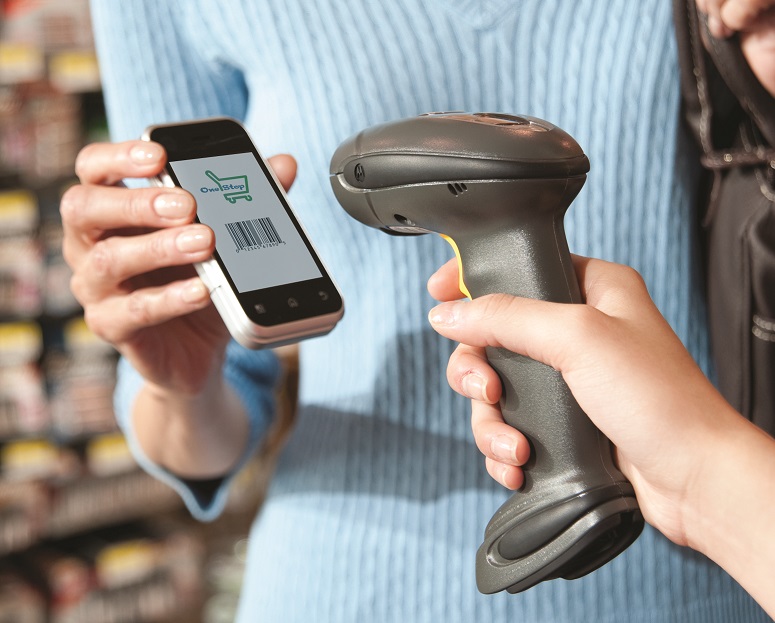Honeywell Barcode Scanners: An Assortment of Options to Fit Any Environment
When it comes to choosing a barcode scanner you have an assortment of options at your fingertips. Honeywell has made it a priority to design scanners that function in every environment. Honeywell’s barcode scanners come in many different shapes, sizes, and functionality. From industrial scanners, pocket scanners, hand-held scanners, hands-free scanners, to many more.
 The Granit 1280i is an industrial, full-range scanner with the capability to read 1D barcodes up to 54 ft (16.5 m) and as close as 3.5 in (8.9 cm). Can read virtually any linear barcodes from poor quality 7.5 mil paper codes to 100 mil retro-reflective and anything in between. As part of the Granit series of scanners, the 1280i has an IP65 rating making it dust tight and water-resistant. Built to survive 50 drops to concrete from 6.5 ft (2 m) and 5,000 tumbles of 3.2 ft (1 m).
The Granit 1280i is an industrial, full-range scanner with the capability to read 1D barcodes up to 54 ft (16.5 m) and as close as 3.5 in (8.9 cm). Can read virtually any linear barcodes from poor quality 7.5 mil paper codes to 100 mil retro-reflective and anything in between. As part of the Granit series of scanners, the 1280i has an IP65 rating making it dust tight and water-resistant. Built to survive 50 drops to concrete from 6.5 ft (2 m) and 5,000 tumbles of 3.2 ft (1 m).
Granit 1280i Features:
- Rubberized casing to reduce damage from falls and tumbles.
- Built for common challenges in different vertical markets and environments.
- Designed for fast-paced, high-volume barcode scanning.
- Outstanding scan performance on poor quality and damaged barcodes.
- Equipped with bright LEDs, enhanced beeper volume, and vibrating tactile response for confirmation of “good reads.”
 The Xenon 1902g-bf is a battery free wireless area-imager scanner. Combine the freedom of Bluetooth low energy wireless technology with the qualities of the Xenon family and you get an aggressive barcode scanner that can scan even the poorest quality or damaged barcodes. The 1902g-bf has the ability to scan over 450 barcodes on a single charge; it can be recharged in less than 60 seconds via a powered USB port. Need a quick charge? Just place the scanner in the base and in 20 seconds the LED will flash notifying the user of sufficient power to support 100 scans.
The Xenon 1902g-bf is a battery free wireless area-imager scanner. Combine the freedom of Bluetooth low energy wireless technology with the qualities of the Xenon family and you get an aggressive barcode scanner that can scan even the poorest quality or damaged barcodes. The 1902g-bf has the ability to scan over 450 barcodes on a single charge; it can be recharged in less than 60 seconds via a powered USB port. Need a quick charge? Just place the scanner in the base and in 20 seconds the LED will flash notifying the user of sufficient power to support 100 scans.
Xenon 1902g-bf Features:
- Fully charges in under two minutes with a simple USB connection, under 60 seconds when a powered USB or External power supply is used.
- Two independent configurable recharge alerts remind the user to place scanner back on the base for charging.
- Designed to withstand 50, 6 ft (1.8 m) drops to concrete.
- IP41 Environmental Sealing.
Choosing a Scanner for UPC Barcode Reading
 UPC barcodes are one of the most commons codes that are being read daily around the world. If you’re not familiar with the UPC code you can find it on any commercial product from the grocery store to the everything on Amazon.
UPC barcodes are one of the most commons codes that are being read daily around the world. If you’re not familiar with the UPC code you can find it on any commercial product from the grocery store to the everything on Amazon.
The UPC number itself is referred to as the GTIN (Global Trade Item Number). The GTIN is made up of two parts: The UPC Company Prefix and the number that you have assigned to that unique product. This information is how any business can recognize what each product is.
The UPC code is a standard 1D linear barcode so almost any device will be a suitable UPC barcode scanner. The primary concern when choosin g a scanner will be reading performance to keep up with your specific application.
Laser Scanners
By far the most common, laser scanners are more than capable of reading any UPC. These scanners often are the most cost effective solution but you will need to properly line up the red laser line with the UPC to get a good read. This usually isn’t a deal breaker but for higher volume applications you may want to look at other options. One of the most popular laser scanners today is the AirTrack S1.
Imagers
Imager-based scanners utilize a specialized camera to read a barcode as opposed to reflecting light like on a laser. This means you can capture barcodes without really aiming. Just get within the reading area of the imager and you can get a positive read. Upside down, sideways, it doesn’t matter. Imagers like the AirTrack S2 will improve scanning accuracy and speed for faster check-out lines and inventory check-ins.
Inventor of the Laser, Charles H. Townes, Passes at Age 99
 Without the efforts and vision of Charles H. Townes, many technologies we take for granted would not even be possible. CD players, barcode scanners, and medical instruments are just a few of the applications that would not be possible with the use of a laser.
Without the efforts and vision of Charles H. Townes, many technologies we take for granted would not even be possible. CD players, barcode scanners, and medical instruments are just a few of the applications that would not be possible with the use of a laser.
In 1964, Dr. Townes and two Russians received the Nobel Prize in Physics for their work on microwave-emitting devices, called masers, and their light-emitting successors, lasers, which have proved to be crucial for modern communications, medicine, astronomy, weapons systems and daily life applications.
Arguably one of the most important and capable inventions of the 20th century, Dr. Townes work and contributions cannot be understated.
He died at the age of 99 in Oakland, California.
How 2D Barcode Scanning Can Benefit your Business
 Scanning Basics: From Laser to Imager
Scanning Basics: From Laser to Imager
Whether you’re aware of it or not, barcodes are one of the most influential technologies of the 20th century. The simple black and white bars you find on every product have helped usher in a level of efficiency that has allowed for large scale tracking around the globe. Many businesses would not be possible to run without the humble barcode. Keeping track of anything accurately is almost unimaginable without barcodes.
Historically, laser-based scanners were used to read barcodes. These laser scanners are still found in many applications today. While there have been advances in the speed and accuracy of laser scanners, the technology is still essentially the same it was when it was first developed in the ‘70s.
Today however, there are two technologies used in readers for barcode scanning: lasers and imagers. Imagers offer several improvements over the traditional laser while also providing important new capabilities, such as being able to read 2D barcodes. Imagers may have been used only in special cases in the past, but today, the advantages they provide over lasers can help improve almost any scanning application.




